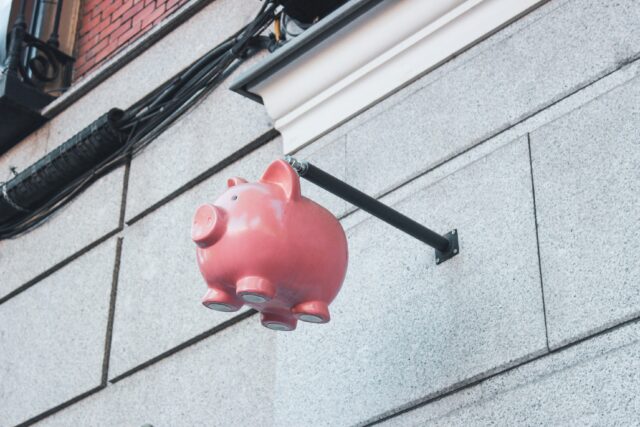Or PNC Bank. In March 2024, PNC launched its “Brilliantly Boring” marketing campaign. The first TV spot opens with a guy walking through perhaps the most boring place on Earth, the DMV.
“You know what’s brilliant?” he says. “Boring.”
“Think about it. Boring is the unsung catalyst for bold. What straps bold to a rocket and hurtles it into space? Boring does.”
From a beach, he continues: “Boring makes vacations happen, early retirements possible, and startups start up because it’s smart, dependable, and steady, all words you want from your bank.”
If the ad is funny, it’s because we hate boredom. PNC is making fun of itself for being boring and simultaneously appropriating boredom as a positive force responsible for its financial success.
“For nearly 160 years,” the ad concludes, “PNC Bank has had one goal, to be brilliantly boring with your money so you can be happily fulfilled with your life, which is pretty un-boring, if you think about it. Thank you, boring.”
The ad fails to thank some of the less boring money management practices PNC bank has participated in. Securities fraud? Pretty un-boring. Mountaintop removal mining? Talk about an unsung catalyst for bold.
The ad contains an even darker irony, though. That “brilliant” boredom underlying PNC’s success has likely created more boredom than it has eliminated.
There is a link, Elpidorou contends, between our contemporary experiences of boredom and our free market systems.
He applies the work of Jens Beckert, who has chronicled the rise and fall of neoliberalism’s “promissory legitimacy.” In the West, neoliberalism gained credibility by promising “increased autonomy and freedom of choice.” Under a system of free enterprise, a modernized welfare state would “lead to a more inclusive and equitable society and labor market.” Neoliberalism promised good times to come.
For many, those times never came. Instead, they got more unemployment, wealth disparity, and instability. They got financial crises and environmental catastrophes. They got laid off and evicted.
The contrast between expectations and results has produced, among other things, a strong foundation for boredom. Whether felt in an Ethiopian city or the New Mexican countryside, boredom can be tied to a painful mismatch between desires for neoliberalism’s promised prosperity and limited economic opportunities on the ground.
“Factors such as grueling and meaningless labor, exploitation, under- or un-employment, political disenfranchisement, endless bureaucratic tasks, austerity policies, and societal stagnation,” Elpidorou writes, “can all fuel or intensify feelings of boredom precisely because they contribute to a felt divergence between cognitive expectations and reality.”
Those vacations, retirements, and startups that PNC Bank presents as standard fare are not a reality for the groups who have suffered because of deregulation and privatization.
Their reality? For one thing, boring jobs. David Graeber’s 2013 essay on “Bullshit Jobs” presented a thesis that so many workers already knew. They had been put into meaningless jobs as receptionists, telemarketers, or middle managers, and yet also told by society to derive meaning from that labor. Graeber writes that this impossible bind incites “profound psychological violence.”
Finkielsztein sees the proliferation of bullshit jobs as evidence of modern boredom’s underlying power dynamics. Employers seek to project power by forcing employees to perform meaningless tasks like going to Starbucks.
“This is the meaning of being an employer,” he says. “So you can avoid boring stuff.”
Inundating workers with boredom keeps them busy and makes them tired, reducing their ability to imagine alternate labor arrangements. After a long day, the limited bandwidth they have leftover gets sucked up into anti-boredom products. They open their phones, Finkielsztein writes, to block out “the oppressive reality of their lives, the oppression of boredom included.”
“Boredom becomes the new opiate of the people,” he continues, “whose listless part makes itself apparent in passivity and whose restless part is directed towards new entertainments and consumer goals in order to leave no mental room for reflection over the social organization of the capitalist system.”
As they infuse work time with boredom tasks and leisure time with anti-boredom salves, corporations leave people with no space to rest and reflect.
“Boredom becomes the new opiate of the people whose listless part makes itself apparent in passivity and whose restless part is directed towards new entertainments and consumer goals in order to leave no mental room for reflection over the social organization of the capitalist system.”
Boredom can play an even more explicit role in employer-employee power relations. In Japan, for example, some companies create so-called “banishment rooms.” Employers exile workers to these rooms (think Milton in “Office Space”) and bombard them with boring tasks until they quit, thereby losing the benefits they would have kept if fired.
Sony calls them “Career Design Rooms.”
“I don’t want to do something openly because there are some laws,” Finkielsztein says, “so I do it through boredom. I bore you to death.”
Boredom has become an end-run around the law, a mechanism through which companies can do more than sell stuff. They can delegate boredom to wield social control.

Image by Jonny Clow and provided by Unsplash under a creative license.
The social weaponization of boredom manifests beyond cubicle walls. Homeless people in Bucharest are denied access to shopping malls and fast-food chains. Refugees are confined to detention centers where their agency is replaced by boredom, a process Finkielsztein and co-author Izabela Wagner call “strategic boredom.” In these cases, the distribution of boredom is patently unequal, typically following lines of socio-economic status.
But the experience of boredom itself may also be unequal. “One of the refrains you often encounter in boredom literature,” Elpidorou says, “is this idea that boredom is a luxury.”
Many have seen boredom as something for the elites. Arthur Schopenhauer wrote that “while the lower classes are engaged in a ceaseless struggle with need, in other words with pain, the upper carry on a constant and often desperate battle with boredom.” Søren Kierkegaard was more direct: “Those who bore others are the plebians… those who bore themselves are the chosen ones, the nobility.”
Elpidorou has questioned that idea of boredom-as-luxury. In a survey of existing empirical research, he proposes three ways in which poverty and boredom may interact.
First, being poor may make it more likely someone will experience boredom. Poverty may incite boredom by placing constraints on freedom, by overburdening attention and cognitive capacities, or by excluding people from meaningful work or social activity.
“We’re all affected by boredom. but we’re not all affected equally by boredom.”
Second, Elpidorou predicts that boredom itself will be a worse experience for members of low-SES groups. Their more frequent states of boredom will trigger other negative feelings, like stress, a lack of control, or perceived meaninglessness, that are exacerbated by their material conditions.
Third, limited resources may make it more difficult to cope with boredom. Those with fewer “opportunities for alternative engagement” will have a harder time dealing with it. Someone’s capacity to get rid of boredom will reflect how much money and time they have for hobbies and travel, the gym and the zoo.
“There is this double penalty, if you may, that one may be asked to pay,” Elpidorou says. “Not just the frequency or intensity but also the inability to deal with boredom effectively.”
He emphasizes the need for more psychological and sociological studies to back up these hypothesized connections. Such work will confirm, he believes, that social class and power have significant implications for both the distribution and experience of boredom.
“We’re all affected by boredom,” Elpidorou concludes, “but we’re not all affected equally by boredom.”
Whereas in Kierkegaard’s time boredom was thought to be something reserved for the elites, now the elites reserve the ability to push boredom onto lower classes while constraining their capacity to relieve it.
Boredom stories are injustice stories.






![[F]law School Episode 6: The Corporatization of Drag](https://theflaw.org/wp-content/uploads/2024/11/Burns_FeatureImage-640x427.jpeg)





